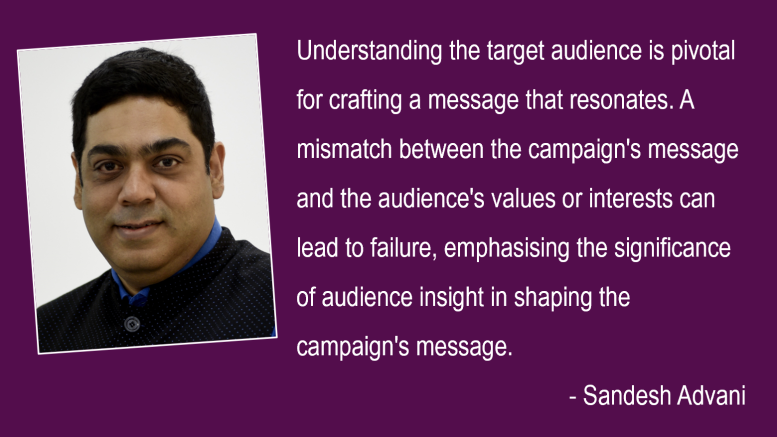For any organisation aiming to establish and uphold its reputation, Public Relations (PR) plays a pivotal role. However, despite thorough planning and implementation, PR campaigns may falter. In the Indian context, several distinctive challenges and errors can lead to the downfall of PR campaigns. This piece delves into the reasons behind the failure of PR campaigns in India, elucidated with specific instances.
- Lack of Well-defined Goals
One of the primary causes of failed PR campaigns lies in the absence of precise and measurable objectives. These objectives act as a guide, steering the campaign in the right direction and offering a clear yardstick for its success.
Example: In 2018, a prominent Indian airline initiated a campaign to promote its new flight routes. However, the campaign’s messaging lacked clarity, leaving it ambiguous whether the aim was to attract more passengers, enhance brand visibility, or underscore customer service. This lack of distinct goals resulted in mixed signals and a lackluster response from the target audience, ultimately impacting the campaign’s success.
- Lack of Cultural Sensitivity
India is a diverse nation with a plethora of languages, religions, and cultural traditions. A PR campaign that acknowledges and respects this diversity can forge deeper connections with the populace, steering clear of offense or alienation.
Example: A global fast-food chain faced backlash in India for inadvertently ridiculing a popular festival in an advertisement. The ad depicted individuals refusing to partake in the festival’s traditional customs, which was deemed disrespectful by many Indians. The campaign had to be withdrawn, and the brand issued an apology, yet the harm to its reputation was already done.
- Timing Mishaps
Timeliness is not merely important but strategic for the triumph of any PR campaign. Launching a campaign at the opportune moment can guarantee maximum visibility and engagement, demonstrating consideration and regard for the audience.
Example: Amidst the COVID-19 pandemic, an Indian luxury brand initiated a campaign promoting its upscale products. The campaign was perceived as insensitive given that a substantial part of the populace was grappling with financial challenges. A more appropriate timing could have been chosen, and the campaign failed to resonate with the audience.
- Underestimating Digital Platforms
In today’s digital era, a robust online presence is indispensable for any PR campaign. Disregarding digital platforms can result in low engagement and missed opportunities.
Example: A well-established Indian company launched a PR campaign predominantly relying on traditional media like print and television while neglecting social media platforms. Consequently, the campaign failed to engage younger audiences who primarily consume content online. The absence of a digital strategy led to limited reach and impact.
- Insufficient Crisis Management
A PR campaign can swiftly spiral out of control in the absence of a sound crisis management strategy. The manner in which a company addresses a crisis can significantly influence the success of its campaign, making crisis management planning an indispensable element of any PR tactic.
Example: A major Indian pharmaceutical company encountered a crisis when one of its drugs exhibited adverse side effects. The company’s initial response was sluggish and defensive, resulting in a loss of consumer trust. The crisis overshadowed the ongoing PR campaign aimed at promoting new products, causing harm to the company’s reputation.
- Failure to Comprehend the Audience
Understanding the target audience is pivotal for crafting a message that resonates. A mismatch between the campaign’s message and the audience’s values or interests can lead to failure, emphasising the significance of audience insight in shaping the campaign’s message.
Example: A luxury automobile manufacturer tailored its PR campaign towards middle-class families in India, emphasising affordability. Nonetheless, the target audience viewed the brand as aspirational rather than economical, resulting in confusion and lack of interest. The campaign needed to allure the intended demographic and meet its objectives.
- Excessive Dependence on Celebrities
Although celebrity endorsements can elevate a PR campaign, relying excessively on them without a robust underlying strategy can backfire. Fixating on the celebrity can overshadow the brand’s message.
Example: An Indian telecommunications company enlisted a popular Bollywood actor to endorse its new service. The campaign heavily featured the actor but failed to convey the unique benefits of the service. Consumers remembered the actor but not the product, leading to a need for increased subscriptions.
- Contradictory Messaging
Consistency in messaging is vital for fortifying a strong brand image. Incongruous or conflicting messages can bewilder the audience and mitigate the campaign’s impact.
Example: A leading Indian bank launched a PR campaign advocating customer-friendly policies. Concurrently, reports surfaced regarding the bank’s involvement in aggressive loan recovery practices. The conflicting messages prompted public scepticism and eroded trust in the brand.
- Neglecting Feedback and Adaptation
Effective PR campaigns necessitate continual monitoring and adjustment based on feedback. Disregarding feedback can result in a campaign falling short of its objectives.
Example: An Indian e-commerce company rolled out a campaign to publicise its new app. Initial feedback from users highlighted numerous technical glitches and a poor user experience. However, the company overlooked this feedback and proceeded with the planned campaign. Consequently, user adoption remained low, and the campaign failed to accomplish its goals.
- Legal and Ethical Oversights
PR campaigns must adhere to legal and ethical norms. Oversights in these domains can lead to severe repercussions, including legal action and a tarnished reputation.
Example: An Indian real estate developer launched a PR campaign promising unrealistic returns on investment. Subsequently, the campaign’s assertions were exposed as misleading, resulting in legal ramifications and hefty fines. The negative publicity severely marred the company’s reputation and undermined the campaign’s objectives.
Conclusion
Similar to any other market, PR campaigns in India necessitate meticulous planning, cultural awareness, well-defined goals, and a profound understanding of the target audience. By learning from past errors and grasping the distinctive challenges posed by the Indian landscape, PR practitioners can formulate more efficient and impactful campaigns. Successful PR revolves around generating buzz, fostering trust, and establishing authentic connections with the audience.
The views and opinions published here belong to the author and do not necessarily reflect the views and opinions of the publisher.



Be the first to comment on "Why PR Campaigns Fail: Insights from the Indian Context"